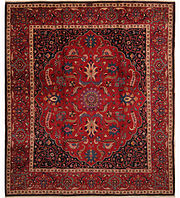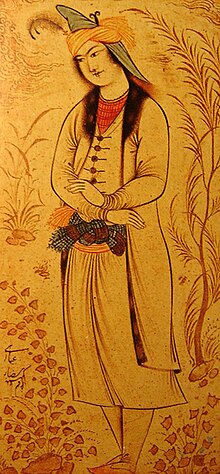The culture of Persia: A Glimpse into Art, Literature, and Global Impact”
The culture of Persia:
The culture of Persia: The Enduring Legacy: Ancient Persian Culture
Explore the roots of the Farhang-e Irān, one of the world’s oldest cultures, with a profound impact on regions from Italy to South and East Asia.
2. Geopolitical Influence: Iran’s Cultural Dominion:
Discover how Iran’s strategic position has directly shaped cultures as diverse as Italy, Macedonia, Greece, Russia, the Arabian Peninsula, and South and East Asia.
3. The Essence of Persian Spirit: Cultural Elasticity
To clarify, The key defining characteristic of the Persian spirit – its cultural elasticity – a clue to the remarkable historical longevity of this ancient culture.
4. Persian vs. Iranian: Unraveling Terminology
In other words,The subtle distinctions between the terms Persian and Iranian as they are interchangeably used, shedding light on the diverse cultures within Greater Persia.
5. Cultural Manifestations: A Tapestry Across History
Delve into the multifaceted manifestations of Iran’s culture throughout history, After that, leaving an indelible mark on regions like the Caucasus, Central Asia, Anatolia, and Mesopotamia.
6. Beyond Borders: Persian Art Unveiled
In the end, The rich tapestry of Persian art, a testament to cultural richness that transcends time and borders.
Persian Art: The culture of Persia
Main article: Persian art
Created by Mihr ‘Ali, an Iranian artist active around 1800–1830, this portrait captures Fath Ali Shah Qajar in 1815. On display at the Brooklyn Museum.
In 1546, a Persian miniature vividly portrays a polo match, showcasing Iran’s rich art heritage. Iranian art spans architecture, painting, weaving, pottery, calligraphy, metalworking, and stonemasonry.
Throughout history, Iranian art evolved, from Achaemenid reliefs to Bishapur’s mosaic paintings. The Islamic era introduced distinct styles, each dynasty emphasizing unique foci. The Qajarid era marked the transition from classical Persian art to the infusion of modernism.
The culture of Persia: Language and Literature Diversity
Iran boasts various languages, with Persian as the national language. Azerbaijani, Kurdish, Luri, Mazandarani, Gilaki, Arabic, Balochi, and Turkmen are spoken in different regions. Persian literature, inspiring Goethe and Emerson, spans dialects from China to Syria to Russia.
Contemporary Literary Influences
Contemporary Iranian literature, shaped by classical Persian poetry, reflects modern Iran through authors like Houshang Moradi-Kermani and poet Ahmad Shamlou.
Religion in Iran
See also: Religion and culture in ancient Iran
In 1841, French architect Pascal Coste painted Isfahan’s Shah Mosque, a masterpiece of Persian architecture.
Zoroastrianism in Iran
Zoroastrianism shaped Iranian philosophy, culture, and art for a millennium before the Arab conquest, leaving a lasting influence.
Religious Diversity in Iran
Iran’s Muslim population, comprising 98%, is predominantly Shia (89%) with a Sunni minority (9%), contrasting with global trends.
Religious Minorities and Persecution
Baha’i followers, Iran’s largest non-Muslim minority, face persecution. Christians, primarily Armenians and Assyrians, coexist, and Judaism is officially recognized.
Holidays and Calendar in Iran
The Persian year begins with the vernal equinox. Major public holidays include Nowrooz, Prophet’s Birthday, Imam Khomeini’s Death, and Islamic Republic Day.
The culture of Persia: Wedding Rituals in Iran
Iranian weddings involve two stages: “Aghd,” the legal marriage, and “Jashn-e Aroosi,” a festive reception lasting 3–7 days with cultural adornments.
Iranian Wedding Ritual: A Symbolic Spread
An adorned spread includes a Mirror, Candelabras, herbs, and spices, each symbolizing various aspects—warding off evil and ensuring prosperity.
The spread encompasses a special flatbread, eggs, almonds, pomegranates, and a cup of rose water. Gold coins, silk scarves, sugar cones, honey, a needle, colored thread, and the Holy Book are vital elements.
Despite efforts to raise the minimum marriage age, young marriages persist in Iran. Legal changes face obstacles.
Cultural Traditions in Iranian Weddings
An intricately arranged spread, laden with symbolic items, enriches the Iranian wedding ceremony. Each element carries profound cultural significance.
Symbols of Love and Prosperity
From burning coals with wild rue to decorated eggs, the spread embodies traditions aiming for a joyous, prosperous union.
Challenges in Marriage Laws
Efforts to raise the marriage age in Iran encounter obstacles. Despite a legal framework, young marriages persist, especially for brides.
Ever-Evolving Traditions
While average marriage ages have increased, cultural practices, like the symbolic spread, continue to shape Iranian weddings.
The culture of Persia;Persian Rugs
In Iran, Persian rugs have always been a vital part of the Persian culture.
Antique Persian Mashad Rug
Persian Carpets: A Historical Artistry
Iranians pioneered carpet weaving for warmth. From basic needs, Persian rugs evolved into intricate, decorative masterpieces.
The history of silk and wool rug weaving in Iran makes Persian rugs globally esteemed. Locally, these rugs are cherished possessions.
Iran leads in rug production, surpassing all other countries combined, showcasing the enduring legacy of Persian carpet artistry.
Modern culture
Iranian Cinema’s Global Impact
Iranian films, honored with 300 international awards in the last decade, showcase directors like Kiarostami, Majidi, Panahi, and Farhadi.
Revival of Iranian Contemporary Art
Interest surges in contemporary Iranian artists and diaspora creators, featuring talents like Aliabadi, Fathi, and Neshat.
Rich Heritage of Persian Music
Persian music, dating back to the Sassanid courts, influences global cultures. Explore the roots with iconic musicians.
Historical Echoes in Persian Painting
An exquisite painting from the Hasht-Behesht Palace in Isfahan, Iran, dated 1669, captures the essence of Iranian female musicians.
Persian Architecture
Persian Sports Legacy
Polo, originating with Iranian tribes, thrived until 1979, gaining renewed attention in 2005 with televised tournaments.
Iranian Women’s Evolving Roles
Since the 1979 Revolution, Iranian women face both opportunities and restrictions, contributing significantly to various sectors.
Educational Empowerment
Post-revolution, Iranian women excelled in education, holding the highest female-to-male ratio globally at the primary level.
Women in Iranian Society
Iranian women, prominent in science, arts, and cinema, constitute 60% of natural science students and play vital societal roles.
Traditional holidays/celebrations
Main article: Iranian festivals
Iranians celebrate the following days based on a solar calendar, in addition to important religious days of Islamic and Shia calendars, which are based on a lunar calendar.
- Nowruz (Iranian New Year) – Starts from 21 March
- Sizdah be dar (Nature Day)
- Jashn-e-Tirgan (Water Festival)
- Jashn-e-Sadeh (Fire Festival)
- Jashn-e-Mehregan (Autumn Festival)
- Shab-e-Yalda (Winter Feast)
- Charshanbeh Suri
Traditional cultural inheritors of the old Persia
Main article: Persianate society
Persian Culture: A Dazzling Tapestry
Reza Abbasi’s artwork, “Prince Muhammad-Beik of Georgia, 1620,” echoes Persian culture’s warmth and creativity, like a vibrant carpet.
Historical Roots in Central Asia
The Caucasus and Central Asia share historical ties with Persian civilization, forming a cultural continuum over thousands of years.
Cultural Unity Across Regions
Peoples of Iran, Armenia, Azerbaijan, Turkey, and Georgia share a cultural and historical bond within the Greater Iranian sphere.
Influence in Northern Caucasus
The Northern Caucasus reflects Persian culture’s influence through relics, ruins, and literary works, connecting diverse regions seamlessly.
The culture of Persia:Iran portal
Culture portal
Iranian Cultural Heritage Organization (ICHO)
International Rankings of Iran in Culture
Encyclopædia Iranica (30-volume encyclopedia of Iran’s culture; edited and published by Columbia University & funded by the National Endowment for the Humanities)
Higher education in Iran
Cinema of Iran
Iranian calendar
Iranian continent
Iranian Studies
Taarof
Qahr and Ashti
Media of Iran
Museums in Iran
Persian cuisine
Persian theatre
Persian names
Persian women
Persianate
PersianizationPersophilia, the admiration of Iranians and their culture
Taarof (Persian form of civility emphasizing both deference and social rank)
Iranian Graphic Designers Network – IGDN (Graphiciran.net)
Persian culture through readings: “Iranian Culture” by Michael C. Hillman, “Iran: At War with History,” and “The Crest of the Peacock” by George Ghevarghese Joseph. Uncover history with S.C. Welch’s “A King’s Book of Kings: The Shah-nameh of Shah Tahmasp.”








